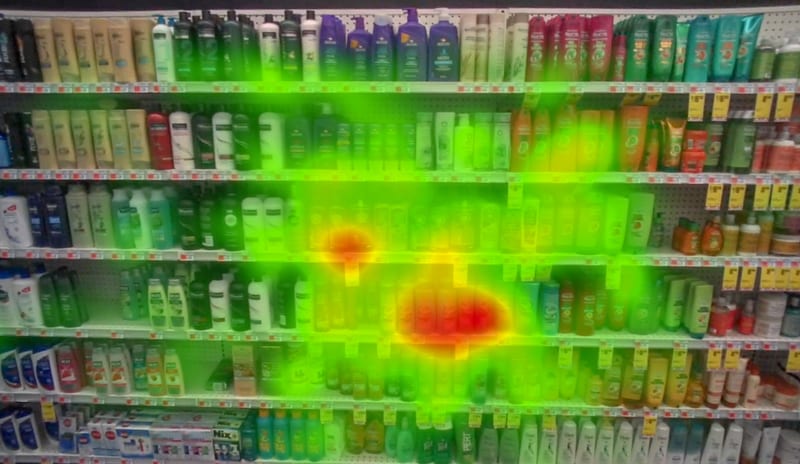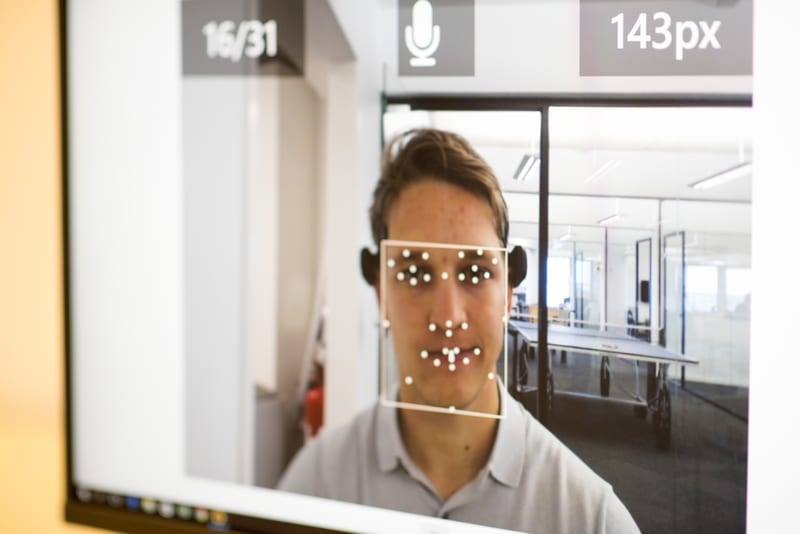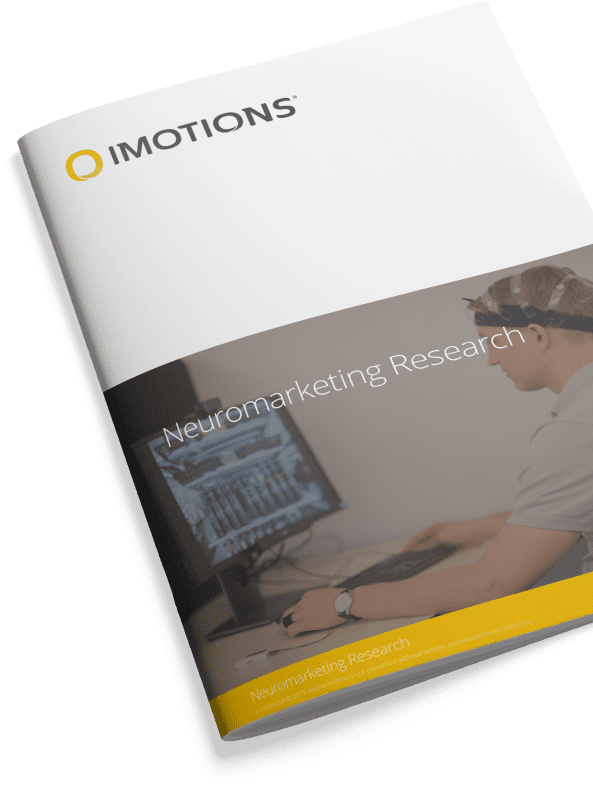One of the most important characteristics of a successful product is the ability to attract the customer’s attention, thus increasing its chances of being sold. Currently, 80 to 95% of all new product launches fail [1]. This highlights the importance of conducting research and analysis of products by using innovative tools capable of better understanding the preferences and desires of consumers.
Biosensor tools are being used more and more frequently for this purpose. These tools allow reliable multimodal research to be carried out both in the academic and commercial spaces. Biosensors help you to better understand what impressions products have on potential consumers, but also to innovate and improve product development processes. Below are four inspiring research applications with biosensors in the field of product development.
Table of Contents
Product Scent with Emotional Impact
Determining emotional impact of scent to support product claims by using biosensors enabled the company P&G to conduct a study with Nielsen Consumer Neuroscience. The study investigated the emotional connection that exists between its customers and their products’ fragrance, comparing the results with other emotionally significant experiences such as music. They tested one of their star products, their laundry detergent capsules called “Gain,” famous for drawing the attention of customers with its characteristic aroma.

Check out: How To Do In-Store Shelf Testing
Nielsen measured the biological expression of the emotional response to odor provided by said product, as well as other non-brand odors that were pleasant, neutral and aversive, through the use of biosensors and analysis of facial expressions by using iMotions. These scents were compared to the emotional responses to music from a favorite genre.

To analyze their results, they used the Affective Circumplex Model of Emotion. This suggests that emotions are distributed in a two-dimensional circular space, containing arousal and valence dimensions. Arousal represents the Y-axis and valence the X-axis. Each of the 4 quadrants are representative of specific emotional states such as agitation, excitement, boredom and relaxation. These models are the most common methods for testing olfactory and touch-based sensory stimuli such as fragrances, and can help categorize the nature of a specific fragrance.
Their results showed that the aroma of their product elicited a greater and more positive emotional response than listening to music from one’s favorite genre. Even those who smelled the product and subsequently listened to music from their favorite genre had a stimulating effect that resulted in an even greater emotional response.
Biosensors in Product Packaging Design
Dynamic Testing Methods to Evaluate Packaging Design in a Realistic Shopping Environment. Since many of the customer decisions are made at the time of purchase, packaging design is a very important and influential step. Packaging evaluation research helps achieve this goal by assessing its design, developing an understanding of consumer perception of the packaged product, and identifying key packaging design factors that are underperforming.
Biosensor devices stand out among the techniques recently used to conduct such studies on the effectiveness of package designs. Most popular methods that are used are eye tracking, electrodermal activity (EDA) / galvanic skin response (GSR) and electroencephalography (EEG).
Check out: Product Development: Advanced Methods

However, Clemson University (1) decided to implement facial expression analysis (FEA) in their research by using iMotions to carry out a study in shopping environments.
Recently, the use of FEA has been limited to static testing methods that do not fully represent realistic consumer behavior. This research group decided to create and test new equipment by using a helmet and a camera, to use it in a mobile study to obtain more dynamic testing. They also evaluated the emotional process of participants opening and discarding home delivery packages, testing if any of the materials from which the packages were made evoked any emotion in the participants.

After testing their equipment and their products, they highlighted the validity of using this type of analysis as a dynamic test method to evaluate packaging design and obtain interesting information on the fast decisions consumers make at the point of purchase. However, they also observed that there is not enough evidence to conclude that the participants’ facial expressions when observing the control and the package during the test showed significant differences between them. More research is needed to build conclusive results.
Testing Emotional Responses to Products
Emotional responses and sensory attribute intensities help to predict consumer liking and preference toward vegetable juice products.
Measuring emotions caused by food or beverages continues to be a challenge for researchers and companies working in this sector. Previous studies have shown that consumer behavior related to this field is influenced by cognitive processing of multisensory perception and emotional experience.
Techniques that measure these parameters can better predict overall liking and preferences of the clients with respect to basic taste solutions. There are different types of methodologies used to carry out these studies, including self-reports, facial expression analysis, and response analysis of the autonomic nervous system (ANS). The latter measures physiological changes in the human body, and these changes can be observed by electrodermal activity (EDA) of the skin measured as skin conductance response (SCR), cardiovascular activity measured as heart rate (HR) or heart rate variability (HRV), skin temperature (ST) and pupil dilation.
Check out: How to conduct Consumer Behavior Research
Building on these previous investigations, the University of Arkansas (2) decided to conduct a study to back up these findings, with the goal of developing an optimal model capable of predicting the general taste or preference of vegetable juice products based on emotional responses.
In this study, participants were asked to look at, smell, and taste some samples of vegetable juices, while their emotional responses were measured by self-reports, facial expression analysis (where they used the iMotions software) and ANS responses.
Their results showed that a combination of the first two methodologies (self-reported emotions and facial expressions) along with sensory attribute perception, produced better results than the models developed separately using the individual measures to predict overall liking of the products.
However, the overall variation explained by these independent variables (i.e., sensory attribute intensities, self-reported emotions, facial expressions, and ANS responses) was low for preference rank. These findings provide empirical evidence that a combination of sensory intensities and emotional responses can better predict consumer acceptance of commercially available vegetable juice products.

Testing a Website as a product
How redesigning a website can maximize company revenue. There are many different ways to carry out product development processes. The most common are those that are responsible for studying the packaging and physical characteristics of the product. But what happens when the main product of the company is a computer program, a software or any product that cannot be physically evaluated? How can the improvement of these products be carried out?
This is the case of the Intuit company and its TurboTax product, the main do-it-yourself tax software in the US. This company decided to evaluate its services because they wanted to understand the effectiveness of the key elements of their product and make changes that would allow them to increase the conversion of new leads and decrease the loss of at-risk customers.
Learn more about How to do Usability Tests on Website
As physical, paper taxes are decreasing, these types of companies that market tax preparation online can attract more customers. However, there is still plenty of competition in the digital space too. That is why Intuit decided to conduct a study with Nielsen Consumer Neuroscience to evaluate the target conversion pages, identify the online content capable of provoking emotions in consumers through the use of biosensors (analyzing these results with iMotions software). The results helped guide the redesign of their website, applying everything observed through biosensors, to get more attention and, therefore, new customers.
The effects of all these optimizations was a 10% increase in income during the high tax season. In addition, they recovered everything invested in carrying out this study within the first 15 minutes of the site going live. Finally, it also helped improve consumer confidence and increase user registrations.
These studies demonstrate biosensors are great tools to implement in research related to the development and improvement of new products or new features. These studies by both commercial companies and research groups, working with both material products and web pages, can serve as interesting guides for future research in similar areas of product development, all done with the power of iMotions.
Download iMotions Neuromarketing Brochure
iMotions is the world’s leading biosensor platform.
Learn more about how iMotions can help you with your neuromarketing work and research

Contributing Writer:
Ariadna Hidalgo Pons
Enablement Specialist at iMotions
iMotions Sensory and Consumer
Research Services
Whether you require a full-service research project, partial research services, or specialized data analysis, our team of experts is ready to assist you.
We carry out tests for
References
[1] Blake, R. (2016). Development of Dynamic Testing Methods Using Facial Expression Analysis to Evaluate Packaging Design in a Realistic Shopping Environment. Clemson University.
[2] Samant, S., & Seo, H. (2019). Using both emotional responses and sensory attribute intensities to predict consumer liking and preference toward vegetable juice products. Food Quality And Preference, 73, 75-85. doi: 10.1016/j.foodqual.2018.12.006












